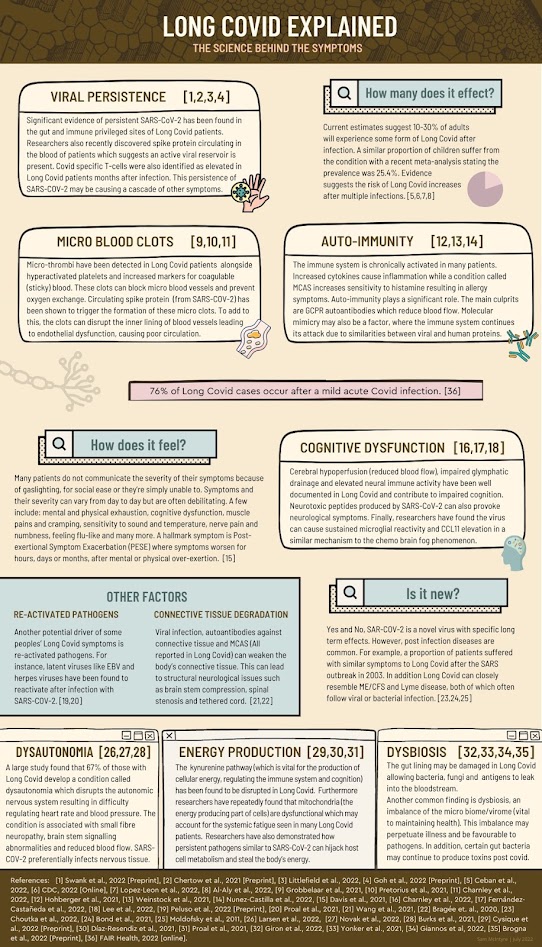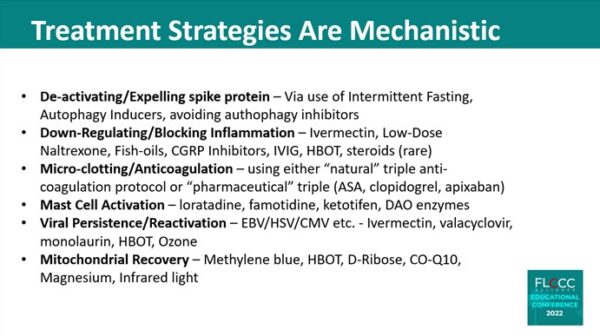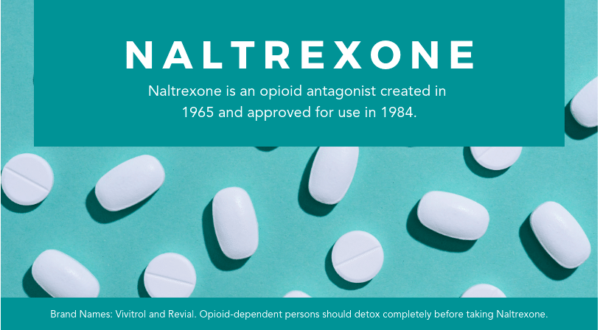Spike Protein Disrupting Immunity in Millions After COVID Infection: Here’s How It’s Being Treated
Multiple studies have shown that the SARS-CoV-2 spike protein is a highly toxic and inflammatory protein, capable of causing pathologies in its hosts.
The presence of spike protein has been strongly linked with long COVID and post-vaccine symptoms. Studies have shown that spike proteins are often present in symptomatic patients, sometimes even months after infections or vaccinations.
The numbers of long COVID and post-vaccine cases have been climbing in the United States, increasingly posing as a healthcare problem.
Update: Outpatient treatment with metformin reduced long COVID incidence by about 41%, compared with placebo (The Lancet 2023)
Data from the Center of Disease Control and Prevention (CDC) estimates that around 15 percent of Americans are currently experiencing long COVID symptoms. Some people with long COVID have been so debilitated that they cannot go to work, the same have been reported in people experiencing post-vaccine symptoms.
Over 880,000 adverse events have been reported to the Vaccine Adverse Event Reporting System (VAERS) database for possible post-COVID vaccine symptoms.
Canadian molecular biologist Jessica Rose estimated an underreporting factor of 31, adding up to an estimation that more than 27 million Americans may have suffered from adverse events following vaccination.
“The vaccine-injured are vast,” said Dr. Pierre Kory on Oct. 15 at a Front Line COVID-19 Critical Care Alliance (FLCCC) conference.
“The numbers are massive … they are underserved and their needs are not being met.”
However, many doctors are looking to change this situation. The FLCCC has been at the forefront in treating COVID-19, long COVID, and post-vaccine symptoms.
No large scale studies have been done on treatment for post-vaccine symptoms. Based on clinical observations, patient feedback, and extensive research, the FLCCC has released its updated treatment recommendations.
The FLCCC co-founder and Chief Scientific Officer Dr. Paul Marik told The Epoch Times that recommendations are always subject to change based on patient feedback, as well as research on a new treatment option.
However, to understand the treatment options, one first needs to understand on how spike protein is causing damage.
Pathology of Spike Proteins
Long COVID and post-vaccine syndrome share a high degree of overlap as the two conditions have both been linked to long-term spike protein presence, and the symptoms are often similar too.
“The core problem in post-vaccine syndrome is chronic ‘immune dysregulation,’” Marik shared at the FLCCC conference.
Spike proteins can cause chronic inflammation. Studies have shown that inflammation can lead to cell stress, damage, and even death. Cells make up tissues, different tissues form organs, and organs are part of our own physiological systems. Therefore spike protein injuries are a systemic syndrome.
Spike proteins trigger chronic inflammation by causing immune dysregulation. Spike proteins enter immune cells, switch off normal immune responses, and trigger pro-inflammatory pathways instead.
The normal immune response for infected immune cells is to release type 1 interferons, this give signals to other immune cells to enhance defense against viral particles. But spike protein reduces this signaling in infected cells, and uninfected cells will also take in and become damaged by the spike protein as the infection goes out of control.
Marik said that a critical aspect of long-term spike protein damage is that it inhibits autophagy, your body’s way of recycling damaged cells. Usually, when cells have been infected with viral particles, the cells will try to break these particles down and remove them as waste.
However, studies on SARS-CoV-2 viruses have shown that autophagy processes are reduced in infected patients, with spike proteins present many months after the initial exposure.
“The spike protein is a really wicked protein,” said Marik. “It switches off autophagy, that’s why the spike can stay in the cells for such a long time.”
 |
| PDF https://docdro.id/8on4krP |
Immune Cell Dysfunction
The immune dysfunction caused by spike protein not only causes inflammation, but also may also contribute to cancer proliferation, and autoimmunity.
Studies have shown that spike can reduce and exhaust the action of T and natural killer cells. These two cell types are responsible for killing infected cells and cancerous cells. Therefore a reduced cellular immunity from T and natural killer cells can contribute to an untimely clearance of spike-infected cells.
Damage from spike can lead to damaged DNA, and studies have shown that spike can also reduce DNA repair. Psychological and environmental stress such as ultraviolet light, pollutants, oxidants, and many other factors, can routinely damage DNA, requiring constant repair.
Damaged DNA puts cells at risk of becoming cancerous, and these cells should be killed to prevent cancer formations. However, with reduced T and natural killer cell activity, this may lead to unchecked proliferation of potentially cancerous cells.
Other dysfunctions that have been reported following vaccinations include autoimmune diseases.
These diseases may be linked to the spike proteins having a high level of molecular mimicry, meaning spike proteins have many regions similar to other proteins in the human body.
So when the immune system attacks the spike protein, due to structural similarities, the antibodies produced against spike protein regions may also react against the body’s own proteins and tissues. Studies have shown that antibodies made against the spike protein can also bind to and attack self tissues.
Spike Protein Causes Fatigue
The spike is also linked with dysfunction in the mitochondria. Colloquially known as the powerhouse of the cell, mitochondria are responsible for harnessing energy from the sugar we ingest.
Human neural cells treated with spike protein have been shown to produce more reactive oxygen species, and this is an indication of mitochondrial dysfunction, suggesting possible reduction in energy production.
People with long COVID and post-vaccine syndromes often experience chronic fatigue, brain fog, exercise intolerance, and muscle weakness. These symptoms are also often seen in people with mitochondrial dysfunction, indicating a possible link.

Spike Protein Damage to Blood Vessels and Organs
Spike proteins have shown to be particularly damaging to cells that line blood vessels. Spike proteins can bind to ACE2 and CD147 receptors and trigger inflammatory pathways.
These receptors are particularly abundant in cells of the blood vessels, heart, immune system, ovaries, and many other areas. Spike protein can therefore trigger inflammation and damage in blood vessels and its related organs, leading to systemic injury.
Marik said that spike protein injury is closer to a systemic syndrome rather than a disease.
“It’s not a disease. It doesn’t fit the traditional model of a disease. This is a syndrome which affects every single organ … the spike goes everywhere … so this is a multi-systems disease and it doesn’t follow the traditional paradigm of a disease which is one symptom, one diagnosis.”

FLCCC’s First Line Treatments
Since long COVID and post-vaccine symptoms are both associated with spike protein presence, the first line treatments recommended by the FLCCC therefore focus on two main steps.
The first step is to remove spike protein, the second step is to reduce its toxicity.
The body will then heal itself, and this is “the primary treatment goal,” said Marik.
Most of the first line treatments have focused on clearing out the spike protein by reactivating autophagy—a process that is downregulated by spike protein.
Lifestyle implementations can boost autophagy through intermittent fasting, and photobiomodulation. Photobiomodulation can be done by exposing oneself to the sun, since sunlight contains infrared rays that boost autophagy in cells.
Intermittent fasting can result in multiple health benefits including improved insulin sensitivity, weight loss, reduced inflammation and autoimmunity, and many more.
However it should be noted that intermittent fasting is not recommended for people younger than the age of 18, as it can prevent growth. Pregnant and breastfeeding women are also not recommended to fast intermittently. People with diabetes and kidney disease are also recommended to check with their primary care physicians before considering intermittent fasting.
While intermittent fasting may not be suitable for everyone, there are other treatment options that can boost autophagy and reduce spike protein toxicity.
Ivermectin
Ivermectin has been highly recommended by the FLCCC and many doctors treating COVID, long COVID, and post-vaccine syndrome, on the basis that it is inexpensive, highly accessible, has a high safety profile, and a high response rate.
The drug is highly dynamic and has also been documented with a variety of functions: antiviral, anti-parasitic, anti-inflammatory, and also boosts autophagy.
Ivermectin can help with the removal of spike protein. Studies have shown that ivermectin has a higher affinity for the spike protein and will bind to its regions, effectively neutralizing and immobilizing it for destruction.
Ivermectin also directly opposes the pro-inflammatory pathways that are triggered by the spike protein including NF-KB pathway that activates inflammatory cytokines and toll-like receptor 4.
FLCCC doctors reason that ivermectin and intermittent fasting can act “synergistically” to remove the body spike protein, and recommends taking ivermectin with or just after a meal.
Ivermectin is also able to bind to ACE2 and CD147, and therefore blocks spike protein from entering and triggering inflammation in cells that display these receptors. Studies have also shown that ivermectin can maintain the energy produced by mitochondria even under conditions of low oxygen.
Kory said that around 70 to 90 percent of his post-vaccine syndrome patients respond to the drug, generally within 10 days.“Patients can be classified as ivermectin responders or non-responders … the non-responders—[are] actually a group of patients that are more difficult to treat,” said Marik.
Patients that are non-responsive—typically after four to six weeks of treatment—are recommended to go on a more aggressive treatment.
When overdosed, ivermectin can cause confusion, disorientation, and possibly even death. However, the drug has a high safety profile when used in reasonable doses. There is little literature on its use in pregnant women so the FLCCC cautions against the use of it in pregnancy.
“Ivermectin has continually proved to be astonishingly safe for human use,” wrote Dr. Satoshi Ohmura, the discoverer of ivermectin in his co-authored study.
“Indeed, it is such a safe drug, with minimal side effects, that it can be administered by non-medical staff and even illiterate individuals in remote rural communities, provided that they have had some very basic, appropriate training.”

Low Dose Naltrexone
Low dose naltrexone (LDN) has recently made the news as an option for long COVID treatment.
“We’ve been using it for many, many months,” said Marik. “Low dose naltrexone is a very potent anti-inflammatory drug. It’s been used in many chronic inflammatory diseases.”
Clinically, FLCCC doctors have seen many of their patients’ symptoms improve following treatment with LDN, though it may take months for the benefits to be clearly visible.
Normal naltrexone is commonly used to prevent overdose in narcotic users. However, when reduced to around a 10th of its normal concentration, to 1 mg to 4.5 mg in LDN, the drug’s mechanism changes dramatically.
LDN has an anti-inflammatory effect; studies show that it is able to block inflammatory toll-like receptors, reduce the production of pro-inflammatory cytokines, and block inflammatory cascades.
LDN works to balance the activity between Th1 and Th2 type cytokines.
Th1 type cytokines tend to produce pro-inflammatory response to kill intracellular parasites and propel autoimmune activities. Th2 type cytokines typically have more of an anti-inflammatory activity and can counteract the activity of Th1 cytokines.
LDN selectively modulates this balance by reducing Th1 activity and increasing Th2 cytokine activities.
Clinically, LDN has been shown to be effective against post-COVID and post-vaccine neurological symptoms. It has been listed by the FLCCC to be effective against neuropathic pain, brain fog, fatigue, bell’s palsy, and facial paresthesia.
This is because LDN also reduces neuroinflammation. It is neuroprotective and is able to cross the blood-brain barrier and reduce inflammatory actions of the microglia, which function as immune cells in the brain.

Resveratrol
Resveratrol is a nutraceutical commonly found in fruits. It can be found in peanuts, pistachios, grapes, red and white wine, blueberries, cranberries, and even cocoa and dark chocolate.
It can also be obtained through vitamins, though there is generally a low bioavailability of resveratrol, and therefore the FLCCC recommends it to be taken with quercetin.
Resveratrol is anti-inflammatory and anti-oxidizing. Studies have shown it to be selective in killing cancer cells. It activates DNA repair pathways and therefore can reduce cellular stress and prevent the formation of cancerous cells.
In stressed cells, resveratrol can reduce reactive oxygen species produced by the mitochondria and promote autophagy. In animal studies on fruit flies and nematodes, the use of resveratrol increased their lifespan, indicating the molecule’s anti-aging and life-extending properties.
Low Dose Aspirin
Similar to ivermectin, aspirin is another drug that has been found to be multifaceted in its effects for health.
Aspirin is anti-inflammatory and an anticoagulant. The drug therefore reduces the chance of micro-clot formation in the blood vessels. Studies have shown that it can also reduce pro-inflammatory pathways, oxidative stress, and is also neuroprotective.
Neurocognitive impairment has been a major complaint of many people suffering from post-COVID vaccine syndromes. This includes brain fog and peripheral neuropathic pain.
Studies on Alzheimer’s disease patients have shown that taking aspirin was associated with slower cognitive decline, though results have been conflicting across different studies.
Animal studies showed that rats that were given aspirin had lower cognitive decline. Studies in rats with damaged nerves suggested that aspirin may also be neuroprotective due to its anti-inflammatory nature.
The use of aspirin may cause side effects in pregnancy and such as bleeding.
Melatonin
Melatonin is a hormone produced by the pineal gland to promote a restful sleep. It has both anti-inflammatory and anti-oxidizing properties.
In cells, melatonin promotes mitochondrial health by reducing active oxygen species. Because the mitochondria uses a lot of oxygen, when it is stressed through environmental toxins such as radiation or spike protein exposure, it may produce reactive oxygen species.
Melatonin, an antioxidant, can therefore prevent oxidative damage. Studies show that it also prevents leakage of electrons from mitochondria and therefore maximizes energy production.
It also promotes autophagy by unblocking the autophagy pathway, helping the cell to break down spike proteins and boost the removal of these toxic proteins.
Due to its anti-oxidizing property, melatonin repairs DNA damaged by free radicals. Melatonin and its metabolites also activate genes that promote DNA repair, and suppress gene activity that may lead to damaged DNA.
Melatonin also has anti-cancerous properties. Animal studies on melatonin have shown that animals that were administered melatonin had a lower rate of tumor generation.
Melatonin has also been recommended by the FLCCC in treating tinnitus, a symptom of post-vaccine and long COVID. The symptom is a ringing in the ears, and can disturb sleep if severe. Melatonin can help reduce the ringing and help people to get a good night’s sleep.
Differences Between Long COVID and Post-Vaccine Syndrome
Both long COVID and post-vaccine syndrome are driven by spike protein load and damage from spike exposure, and therefore share a high degree of overlap in treatment.However, doctors notice slight differences in certain clinical presentations between the two conditions, and therefore the FLCCC have prioritized different treatments.
“It seems that with the vaccine injured, the predominant symptom and the predominant organ is neurological,” said Marik. In his observation, roughly “more than 80 percent of patients with vaccine injury have some degree of neurological impairment.”
Marik said post-vaccine symptoms can also be harder to treat than long COVID, and are more persistent, with some patients presenting with debilitating symptoms for almost two years.
Therefore treatment for people with post-vaccine symptoms are “more aggressive and more brain targeted,” said Marik.
“It seems like long COVID gets better with time. While some patients persist, it seems to be somewhat self resolving to a degree,” said Marik. “The problem with the vaccine-injured is that it can persist. We have patients who were vaccinated in December of 2020 … [who] are still severely, severely injured.”
“The two are similar, but we’ve put much more emphasis on the vaccine-injury because it’s a much more difficult disease to treat.”
About the Author: Marina Zhang is based in New York and covers health and science.To find a list of physicians who follow the protocols and provide in-office and telehealth services: List of Doctors that will prescribe FLCCC protocols.
Z-Dtox Supplement
Your immune system can be weakened by over 300 different primary immunodeficiency disorders, poor diet, lack of sleep, and adverse reactions to various vaccines.
That’s where Z-DTOX comes in! Z-Dtox is Dr. Zelenko’s proprietary combination of NAC, EGCG, Zinc, Vitamin C, and Vitamin D.
Ingredients:
- Epigallocatechin gallate (EGCG) is an extract of green tea and is a powerful zinc Ionophore (zinc delivery system).
- N-acetyl cysteine (NAC) is a supplement form of cysteine. It may prevent blood clots and is an antioxidant.
- Zinc is critical for immune cell development. Dozens of different enzymes in the body rely on zinc.
- Vitamin C is an essential nutrient involved in the repair of tissue and the enzymatic production of certain neurotransmitters.
- Vitamin D is a group of fat-soluble secosteroids responsible for increasing intestinal absorption of calcium, magnesium, and phosphate, and many other biological effects.
Note: To get 5% OFF, please use this coupon code: drfrancis







.png)

Comments
Post a Comment